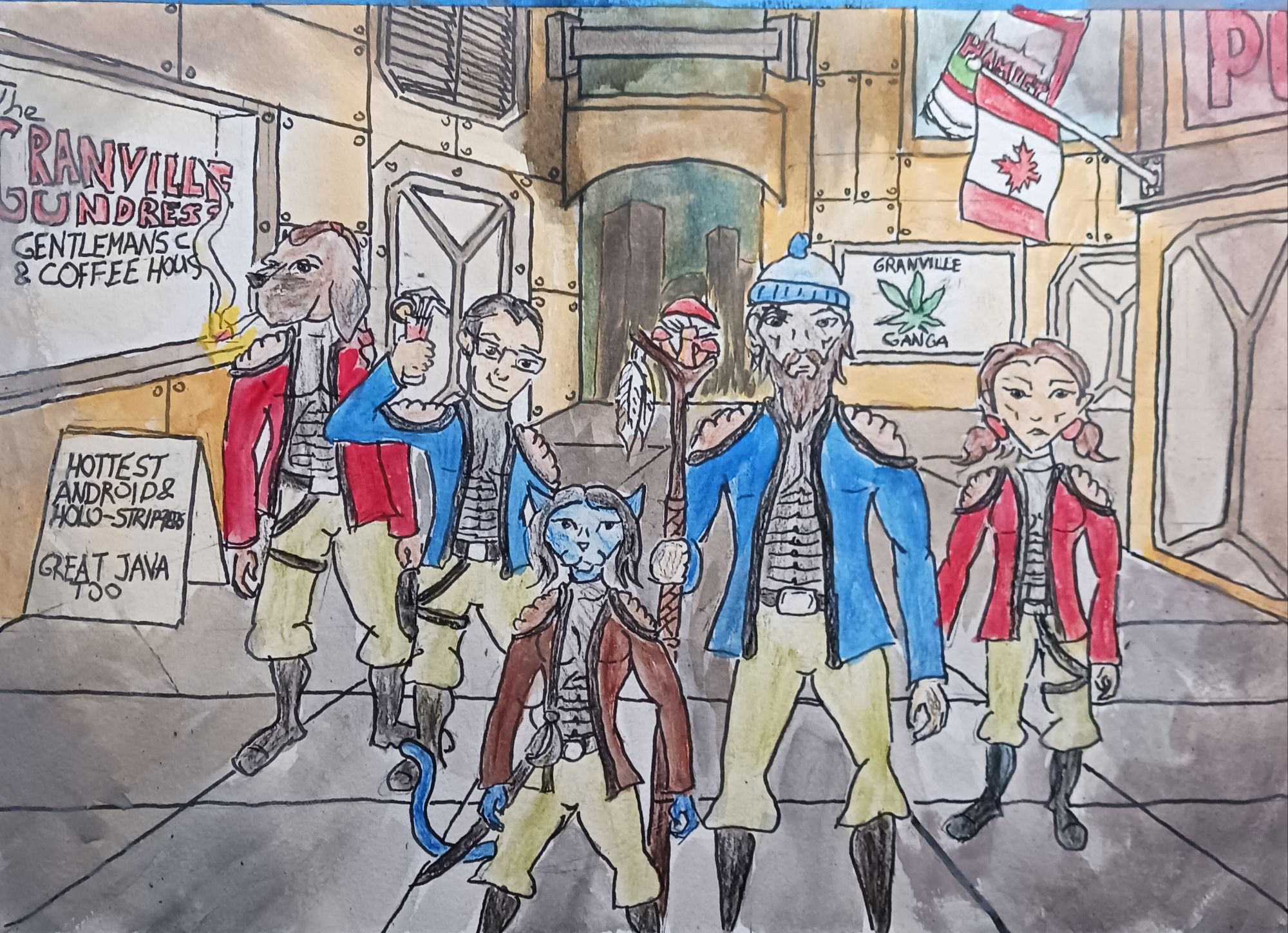Conservation Status
Not Evaluated (NE)
Scientific Classification
Kingdom: Animalia
Phylum: Chordata
Class: Mammalia
Order: Artiodactyla
Family: Bovidae
Genus: Bovipellis
Species: B. drumhellerensis
Binomial Name
Bovipellis drumhellerensis
Common Names
The Drumheller Cow, Drumheller, Purple Drumheller
General Information
Bovipellis drumhellerensis, commonly known as the Drumheller Cow or Purple Drumheller, is a large herbivorous mammal native to Drumheller Prime in the Drumheller System of the Alberta Sector Overview A Sector, commonly referred to as a Provincial Sector, is a designated area of space within the broader and diverse cosmic region known as the Canadian Expanse. These Sectors function similarly to provinces, contributing to the organization and governance of this vast territory. Structure and Division The Canadian Expanse is divided into thirteen Provincial Sectors, each with its own... More. Noted for its significant role in local ecosystems and indigenous cultures, this species has been a crucial food source and may have influenced the evolutionary trajectory of the indigenous proto-humanoid species on the planet.
Overview A Sector, commonly referred to as a Provincial Sector, is a designated area of space within the broader and diverse cosmic region known as the Canadian Expanse. These Sectors function similarly to provinces, contributing to the organization and governance of this vast territory. Structure and Division The Canadian Expanse is divided into thirteen Provincial Sectors, each with its own... More. Noted for its significant role in local ecosystems and indigenous cultures, this species has been a crucial food source and may have influenced the evolutionary trajectory of the indigenous proto-humanoid species on the planet.
Description
Adult Drumheller Cows stand about 2.2 meters at the shoulder, roughly the size of an Earth moose, and exhibit a robust, highly muscular build. They possess a distinctive head of long, straight black hair extending to mid-chest and a black mane that terminates at the shoulder blades. The species is characterized by its unique grayish-purple coloration and striking purple eyes. Adapted for grazing, they have molars suited for peeling bark and consuming vegetation, though they supplement their diet with ants and other insects. The feet are equipped with cloven hooves, five on each foot.
Reproduction and Lifespan
Bovipellis drumhellerensis has a reproductive cycle with a gestation period of 16 weeks, giving birth to litters of 12 to 14 calves. The calves nurse for up to one year before transitioning to solid food. One of the most unusual aspects of their biology is the ability of biological males to irreversibly transform into females, a phenomenon thought to be linked to environmental or social triggers related to population dynamics. Individuals of this species typically live up to 50 years.
Dietary Habits
Primarily herbivores, Drumheller Cows mainly consume a wide variety of vegetation but will occasionally eat ants and other insects to supplement their diet.
Economic and Cultural Significance
The meat of the Drumheller Cow is highly prized, compared favorably to wagyu beef but contains only a quarter of the cholesterol, making it a valuable culinary commodity. Their milk, noted for its slightly higher fat content, is ideal for producing rich cheeses and yogurts, particularly fromage en grains. Moreover, they are an environmentally friendly alternative to Earth cattle, producing significantly less methane.
Conservation
While Bovipellis drumhellerensis is not currently evaluated for conservation status, it plays a vital role in the agriculture and food systems of Drumheller Prime. Sustainable management practices are essential to maintaining their populations due to their importance to local cultures and ecosystems.

